|
HEATHER CLINE - Edges
Reception: Saturday March 29, 2 - 4 PM
March 29 - May 3
Art Placement is excited to announce Heather Cline's latest exhibition at the gallery, EDGES, which continues her explorations and observations of the prairie landscape from the air. Clines aerial paintings poetically fuse form and subject. Dipping her brush equally into the histories of impressionistic realism and formalist hard-edge abstraction, her synthesis of these stylistic traditions is mirrored in the landscape itself, in the way that the natural features of the terrain are knitted into the grids and ordered structures of human development. It is a dynamic collision that Cline renders with incredible precision, masterful sensitivity to materials, and stunningly luminous colour. The series has quickly become a signature motif for Cline, finding countless admirers locally and nationally. At once both familiar and fresh, her iconic images nod to the beloved tradition of landscape painting on the prairies with a distinctly contemporary edge.
Artist Statement:
Heather Cline: Edges
Observations of Landscape from the Air
*Edges-the outside limit of an object, area, or surface; the point immediately before something momentous occurs or someone loses control; an intense, sharp, or striking quality...
Viewing the landscape from the passenger seat of a small plane is a profound experience. There is great beauty and complexity in this patterned landscape; the human geography (altered spaces) interwoven with natural elements (waterways, unbroken prairie and parkland
forest). When I first started documenting the landscape from the aerial perspective, I wanted to
be a witness to the impact that human activity has on our environment. With this observation
there is the realization of how the landscape of Western Canada has radically changed in just
the last 100 years. Different approaches to land management and the emergence of the
corporate farming complex have accelerated some of these changes. I realized that I was
interested in capturing some of the remaining areas of natural landscape and exploring how
these areas intersect with our very real need for food production.
In the Spring of 2023, I started a collaborative project with the Nature Conservancy of Canada. I
wanted to explore creating artwork inspired by viewing the landscape through a conservation
lens, walking the land with their staff and stakeholders. One of the main reasons I approached
Nature Conservancy of Canada was their focus not just on land conservation but on a
collaborative approach to understanding human interaction with our environment. This led to
exploring the NCC Working Landscapes program. This is an outreach program that helps
producers manage natural areas while pursuing a livelihood in agricultural production. As I
started to visit sites, followed by a series of fly-overs, I found my experience on the ground was
changing how I viewed the landscape from above.
The specific body of work entitled 'Edges' was inspired by several conversations about shelter
belts. It was a discussion that reveals the complexity inherent in trying to make choices about
land use from a conservation perspective. On the one hand the shelter belts were created using
mainly invasive species. In many areas Caragana were planted to prevent soil erosion during
the droughts of the 1930s. Caragana is incredibly invasive and very difficult to eradicate. It
threatens remaining stands of Aspen Forest and pockets of Parkland Habitat. But these
hedgerows also provide essential shelter for birds and small mammals. On the South and
Central prairies many producers are starting to remove shelter belts, "pushing bush", to make
room for the use of more sophisticated equipment and increasingly efficient crop production.
This eradication led me to begin looking even more closely at the places where natural habitat
and altered agriculture spaces still sit side by side - areas of marshland and stands of Aspen
and Poplar trees that linger on the edges of production. Some producers are choosing to leave
these areas intact, to protect wildlife, and as an aspect of water management.
As the body of work progressed, I started to fly over more of Central Saskatchewan. In these
areas there is confluence of lakes, natural parkland habitat and landscape modified for planting.
These are part of the 'edges', places where key decisions are still being made about land use. I
hope this body of work inspires viewers to consider our impact on the landscape and to engage
in some of the amazing work being done by people involved in land stewardship in Western
Canada.
- Heather Cline, 2025
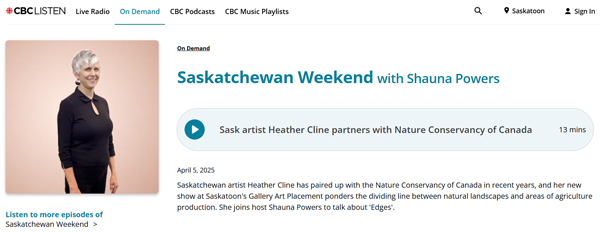
Heather Cline was recently interviewed by Shauna Powers for CBC Radio. Click here to listen to her talk about her current exhibition at the gallery and her larger project in partnership with Nature Conservancy of Canada.
installation images:
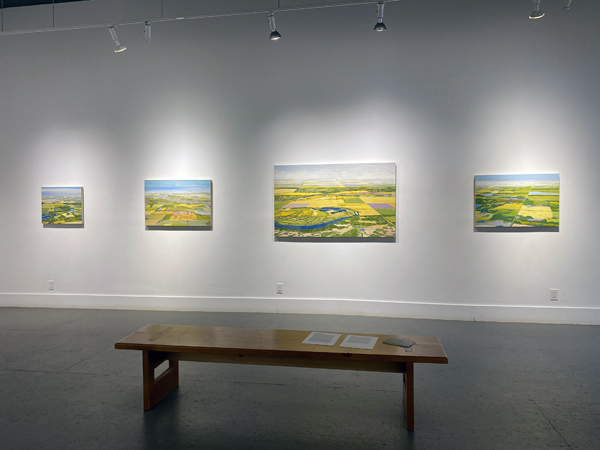
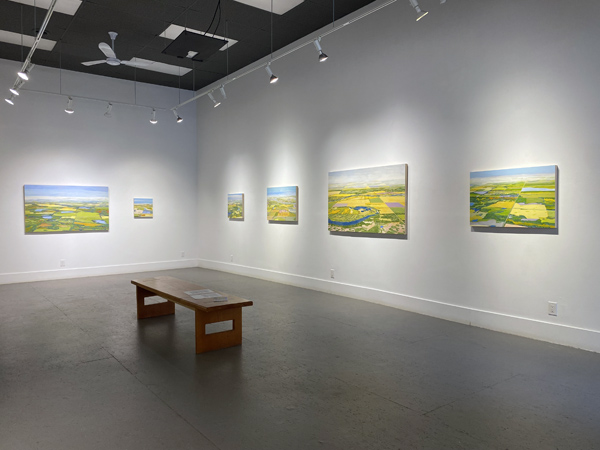
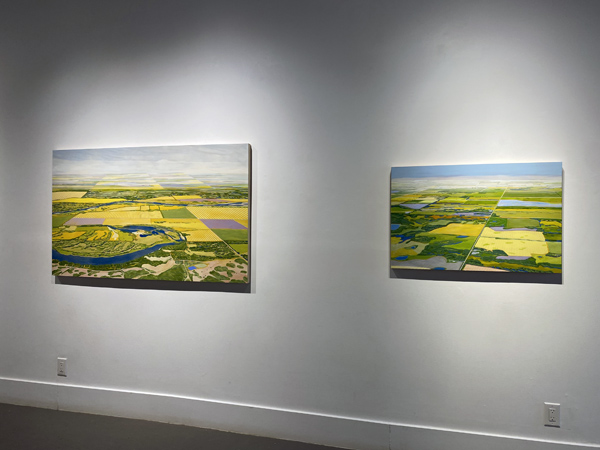
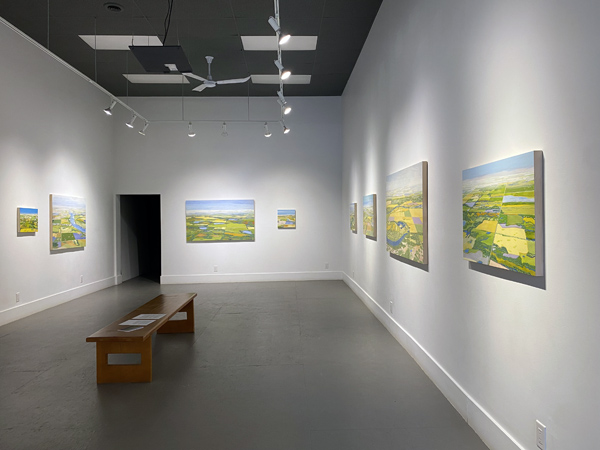
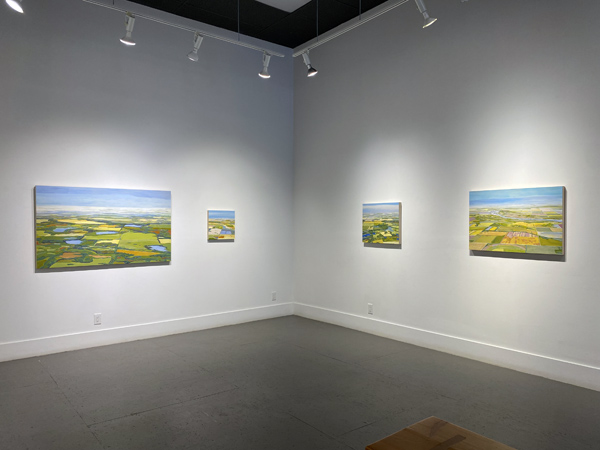
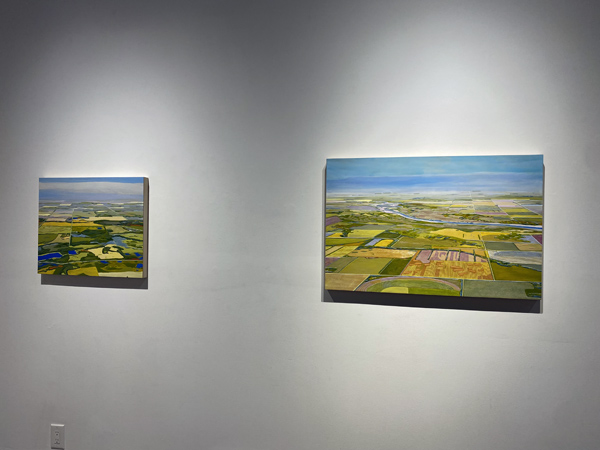
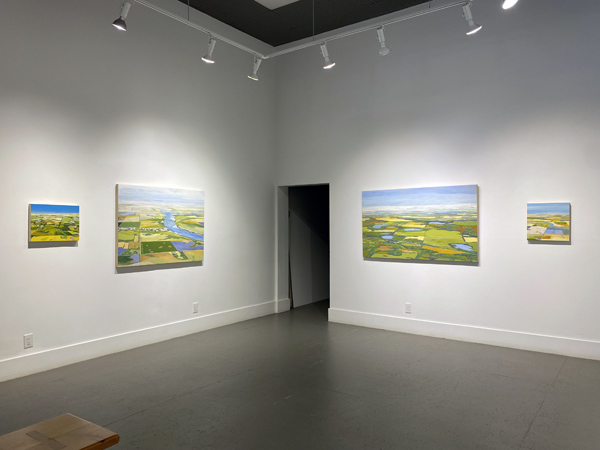
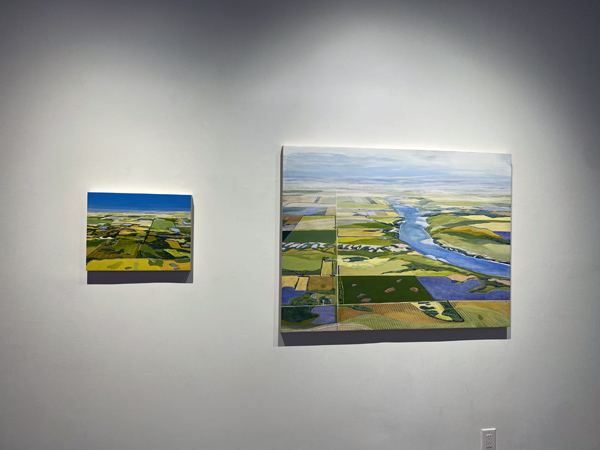
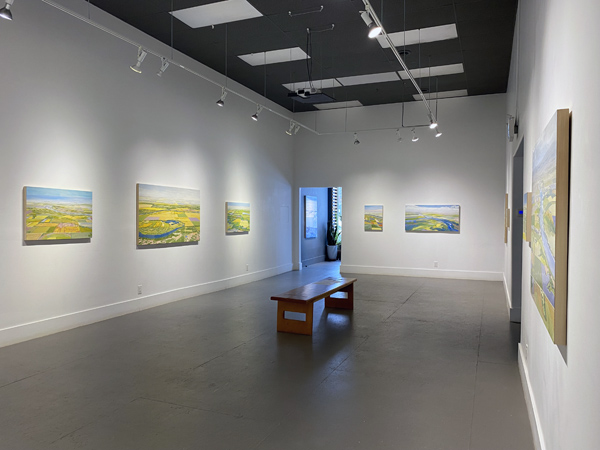
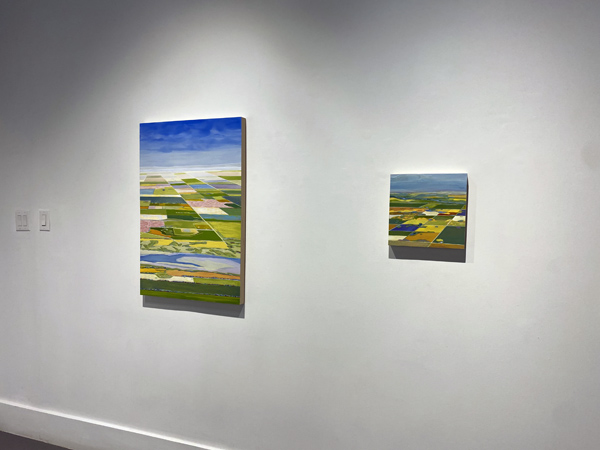
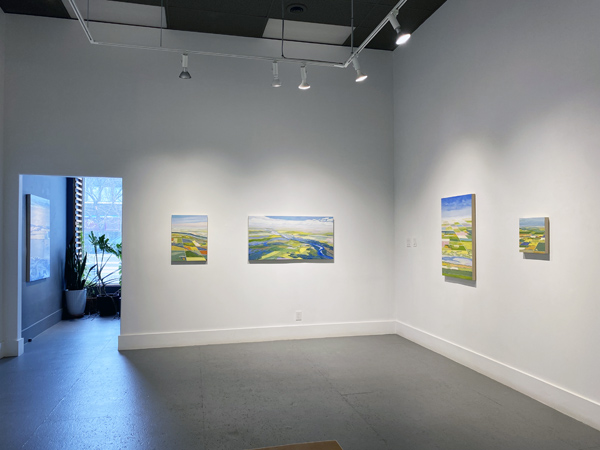
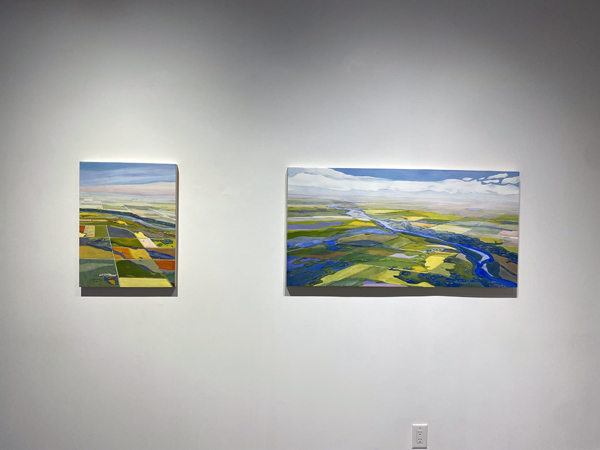
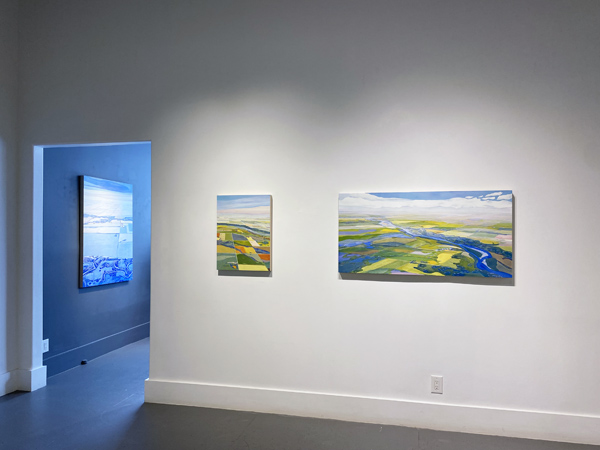
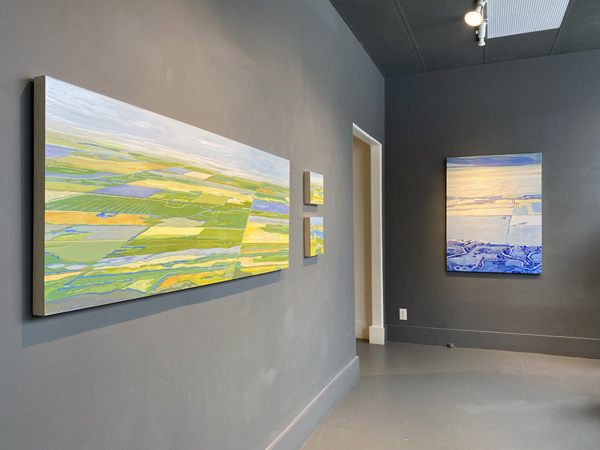
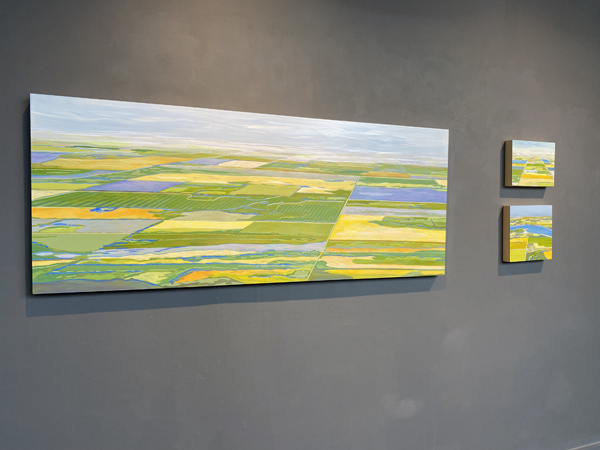
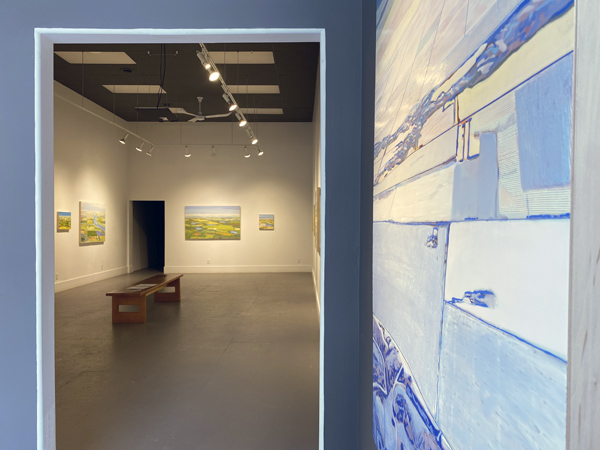
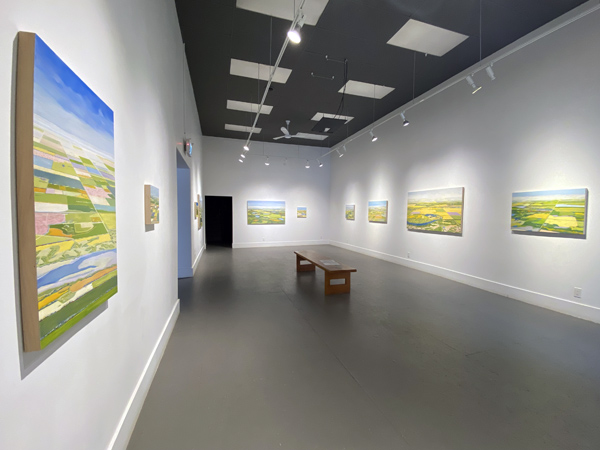
|


